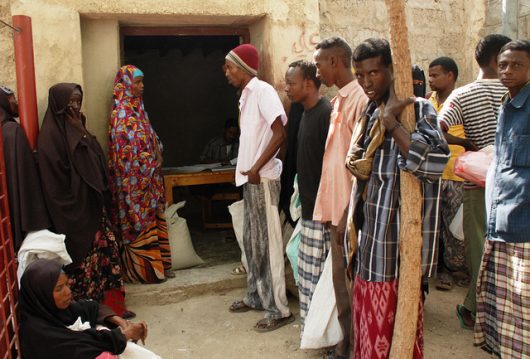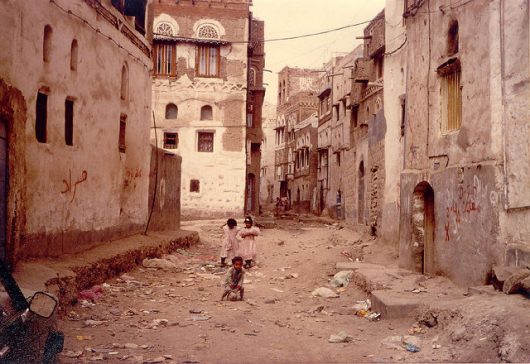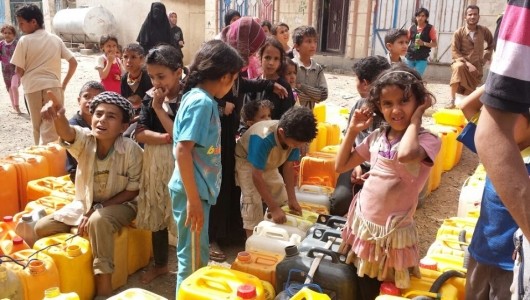 The Hudaydah port in Yemen plays an impactful role, handling 70% of the nation’s imports, including crucial humanitarian aid and commercial supplies. The ongoing conflict has disrupted operations at Hudaydah and the nearby Saleef port, drastically affecting more than eight million Yemenis who rely on these imports. To mitigate this humanitarian crisis, the conflicting parties established the Hudaydah Agreement, which aims to shield the ports from conflict. The United Nations (U.N.) monitors this agreement to ensure compliance and maintain the essential flow of goods.
The Hudaydah port in Yemen plays an impactful role, handling 70% of the nation’s imports, including crucial humanitarian aid and commercial supplies. The ongoing conflict has disrupted operations at Hudaydah and the nearby Saleef port, drastically affecting more than eight million Yemenis who rely on these imports. To mitigate this humanitarian crisis, the conflicting parties established the Hudaydah Agreement, which aims to shield the ports from conflict. The United Nations (U.N.) monitors this agreement to ensure compliance and maintain the essential flow of goods.
Strengthening the Hudaydah Agreement
On June 14, 2024, Saudi Arabia’s Ambassador to the U.N., Abdulaziz AlWasil, met with Michael Beary, Head of the U.N. Mission to Support the Hudaydah Agreement (UNMHA), in New York City. The meeting focused on reinforcing the agreement that plays a crucial role in maintaining the flow of humanitarian aid through Yemen’s vital Hudaydah ports. Both Saudi Arabia and the U.N. have committed to ensuring the stability and security of these ports and advancing peace throughout Yemen. Their diplomatic efforts, including the Hudaydah Agreement, exemplify ongoing initiatives to resolve the conflict and promote recovery in Yemen.
Saudi Arabia’s Role in Yemen’s Diplomacy
The Kingdom of Saudi Arabia, in collaboration with allied nations and the U.N., is vigorously advocating for a diplomatic solution to the conflict in Yemen. Over the past year, Saudi Arabia has facilitated negotiations between Yemen’s internationally recognized government based in Aden and the Houthi rebels. These ongoing discussions aim to cease the fighting and ensure the full reopening of ports critical for importing humanitarian aid. The efforts of Saudi Arabia to secure a ceasefire and safeguard the Hudaydah ports received commendation from Hans Grundberg, the U.N. Special Envoy for Yemen, who described them as a “step change.” According to U.N. and Saudi officials, the diplomatic initiatives supporting the Hudaydah Agreement are making progress and have been ongoing for an extended period.
The United Nation’s Diplomatic Initiatives
In collaboration with Saudi Arabia, the U.N. has been intensively engaged in diplomatic efforts to ensure the ongoing delivery of aid to Yemen through the Hudaydah ports and other channels. On December 26, 2023, U.N. Special Envoy Hans Grundberg announced ongoing discussions with both the Yemeni government in Aden and the Houthi rebels. These talks aim to create a peace roadmap for Yemen that can potentially benefit all citizens, particularly those in dire need. Key elements of the roadmap include a nationwide ceasefire, the reopening of roads in various regions and reducing restrictions on essential ports like those in Hudaydah.
A Unified Approach to Resolve Yemen’s Crisis
The collaboration between Saudi Arabia and the U.N. exemplifies a unified approach to addressing the complex challenges in Yemen. Through sustained diplomatic efforts and strategic interventions, both entities aim to secure a stable and peaceful environment in Yemen, ensuring that aid reaches those in dire need and paving the way toward a resolution of the protracted conflict.
– Abdullah Dowaihy
Abdullah is based in Riyadh, Saudi Arabia and focuses on Good News, and Politics for The Borgen Project.
Photo: Unsplash
 Yemen is a Middle Eastern country on the southern tip of the Arabian Peninsula. Due to a long-lasting and violent civil war, it “remains the world’s
Yemen is a Middle Eastern country on the southern tip of the Arabian Peninsula. Due to a long-lasting and violent civil war, it “remains the world’s 




 Ongoing conflict in
Ongoing conflict in 
